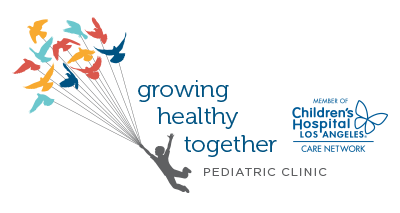There are currently cities in the U.S. that are providing citizens with drinking water contaminated with high levels of lead. As you may have read in the unfolding story about water quality, Flint, Michigan switched in 2014 from using the Detroit water system to using water from nearby Flint River. Almost immediately, the city’s residents reported cloudy, foul-smelling water. However, officials covered up and denied any reports of river water contamination. Many of Flint’s children now present with moderate to severe physical symptoms, learning disabilities and behavioral issues associated with consistent lead poisoning.
More information is now coming out about other cities in the United States with lead problems in drinking water. Thus, we’re not all safe from lead poisoning. This will continue to be an issue throughout the US. Unfortunately, impoverished Americans are most disproportionately affected.
The EPA reports that there are some drinking water systems currently get their water from streams or rivers that are not limited by clean-water laws. Additionally, though lead pipes are banned, many systems have older pipes that haven’t been replaced. This causes lead to leach into tap water. We know that lead exposure contributes to a number of brain and central nervous system problems in adults that cause coma, convulsions, anemia, hypertension, renal impairment, damage to the immune system, damage to reproductive organs, and death.
Lead Poisoning in Children
According to the World Health Organization:
“Young children are particularly vulnerable to the toxic effects of lead and can suffer profound and permanent adverse health effects, particularly affecting the development of the brain and nervous system. Lead also causes long-term harm in adults, including increased risk of high blood pressure and kidney damage. Exposure of pregnant women to high levels of lead can cause miscarriage, stillbirth, premature birth and low birth weight, as well as minor malformations.”
Lead Poisoning Effects:
- Mental retardation
- Behavioral changes (shortening of attention span, antisocial behavior)
- Reduced IQs
- Educational obstacles
Children absorb 4-5 times as much lead as adults and hand-to-mouth behaviors common in kids increase their chances of lead exposure. Typically, we find that children can ingest lead from soil and lead-coated objects. In fact, children with pica are at a higher risk because of their tendency to put non-food items in their mouth.
The CDC reports that at least four million households in the United States have children living in them that are being exposed to high levels of lead. In addition, the WHO reports, “childhood lead exposure is estimated to contribute to about 600,000 new cases of children developing intellectual disabilities every year.”
A Test for Lead
Blood tests show lead within a month of exposure. Lead accumulates over time in the system, and large amounts can be found stored in certain organs and systems, like the brain, bones, and teeth. Lead poisoning is easily detectable and we recommend testing to be sure that your child is safe. Here at GHT, we recommend testing for lead at their one-year Wellness Visit and two-year Wellness Visit.
Lead Poisoning FAQs:
How can I be sure my water doesn’t have lead in it?
You can order a fairly cheap lead test online. For better accuracy, you can have someone come test your water for lead. In Long Beach, we’re lucky to have access to good water that we can drink from the tap. However, if you live in a city with questionable drinking water, contact your local water company for assurances on water safety.
How do we protect ourselves from lead paint?
If your home was built before 1978, you may have a house with lead paint. If your paint is peeling or chipping, you should find a safe way to get rid of old lead paint and repaint with something safer for your family’s environment. Be aware of any exposed lead during the renovation of older structures.
How much lead should I be worried about?
According to the CDC, “no safe blood lead level in children has been identified.” However, especially after the Flint water quality crisis, researchers consider anything above 5 μg/dL (micrograms per deciliter) to be much higher than most children’s levels.
What happens if I test my kid and the test comes back positive?
If your child has been exposed to lead, the first step is to find and remove the source of lead. Lead is not only found in drinking water, but also in lead paint, car exhaust, water pipes, soil, older cosmetics, etc.
After a positive lead test, it’s important to keep an eye on behavioral or mental problems. Catching these problems early will help you to find the services you need to help your child through any developmental delays or lasting developmental problems. Severe cases of lead poisoning (over 45 μg/dL of lead), may require chelation or lead therapy.
What is chelation therapy?
Remove heavy metals from the blood with chelation therapy. A synthetic amino acid called EDTA (ethylene diamine tetra-acetic acid) binds to the metal in your system. Metal is then passed with urine. Most commonly, this therapy is used on those exposed to a large amount of mercury or lead (over 45 μg/dL).
What if I boil the water before I drink it?
Purifying by boiling your water will not remove lead. In fact, as the water boils and evaporates away, the concentration of lead increases. Also, hot water dissolves lead more easily than cold water, so boiling might increase the amount of lead absorbed by your body. This is why it’s really important not to cook with lead-exposed water.
Is there a way to filter water in order to get rid of any traces of lead?
There are a few ways to filter lead out of your water. We don’t think you should be drinking lead-exposed water at all. If you cannot afford to exclusively use bottled water or water from other, safer sources, you can filter your water with some filtration methods (reverse osmosis, distillation, or carbon filters). For more information, go to the National Science Foundation’s page on water filtration.
Exposure to lead caused my child to develop minor behavioral issues. What do we do now?
Firstly, check your child’s BLL (blood lead level) at your child’s next appointment to see if they have lead in their system. We at GHT recommend testing for lead at your one- and two-year wellness visits.
Unfortunately, developmental damage from lead in children is irreversible. Ask us about developmental programs for mental or behavioral issues. Furthermore, you can begin by seeing a psychologist for a better understanding of what’s happening to your child.
How can I protect myself from lead exposure?
Some people work with lead on a daily basis or have little control over their lead exposure. In order to minimize lead exposure, be sure that you and your family eat a healthy diet. Get plenty of calcium, iron, and Vitamin C to ensure that less lead is metabolized. Additionally, it’s important to eat a diet low in fat.
Studies show that ascorbic acid (vitamin C), in particular, prevents the metabolism of lead. In some studies, researchers found that those taking minimum vitamin C had lower lead levels than those not taking vitamin C. Furthermore, vitamin C may even prevent lead absorption on a cellular level. We recommend 25 mg/day for kids ages 4-8, and 45 mg/day for ages 9-13. Foods with vitamin C include citrus fruits, dark leafy greens, broccoli, kiwis, bell peppers, berries, tomatoes, and papayas.
Does lead exposure in pregnant women affect babies in utero?
Yes. Absolutely. Exposure to lead is dangerous for pregnant women. Lead exposure during development leads to premature birth, low birth rate, lower IQ, and developmental delays, among other health problems.
What about breastfeeding moms – are babies at risk of lead exposure through breast milk?
Low levels of lead in breast milk are not ideal, but the health benefits of breastfeeding are so important that the CDC developed a blood lead level that’s acceptable for breastfeeding. Mothers with a BLL less than 40 μg/dL can continue to breastfeed, though their infant should be monitored. Anyone breastfeeding with a BLL of 40 μg/dL or more should pump and dump until the lead is out of their system.
I didn’t really know anything about lead poisoning before the Flint water quality crisis. Are there other metals or chemicals I should be protecting my family from?
Chemicals are all around us, in everything we eat and everything we touch. However, there are some chemicals, like lead, that are immediate dangers to our health. The WHO put together a list of the top ten chemicals of public health concern.
- Air pollution
- Arsenic
- Asbestos
- Benzene
- Cadmium
- Dioxin
- Inadequate fluoride or excess fluoride
- Lead
- Mercury
- Hazardous pesticides
The EPA has a list of the contaminants allowed in drinking water.
In conclusion, for questions or concerns, comment on this blog or contact us. Check out Shaklee’s clean water pitcher to better filter your tap water. Learn more about the environment around you in order to better protect yourself and your family. For comments or questions, please comment on this blog or contact us.







